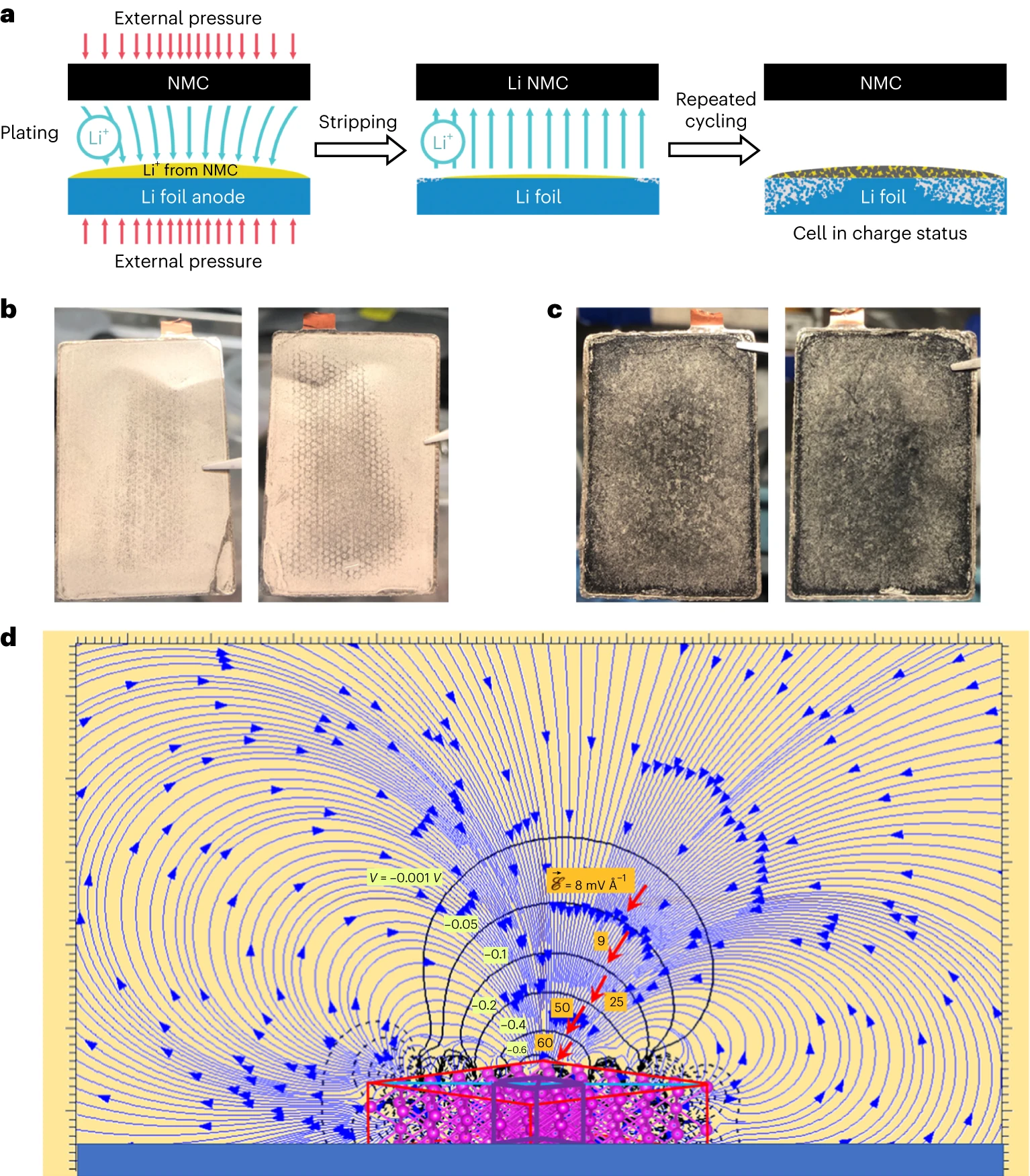Cell performance
click images to enlarge:
Dianying Liu, Bingbin Wu, Yaobin Xu, Jacob Ellis, Arthur Baranovskiy, Dongping Lu, Joshua Lochala, Cassidy Anderson, Kevin Baar, Deyang Qu, Jihui Yang, Diego Galvez-Aranda, Katherine-Jaime Lopez, Perla B. Balbuena, Jorge M. Seminario, Jun Liu, and Jie Xiao, “Controlled Large Area Lithium Deposition to Reduce Swelling of High Energy Lithium Metal Pouch Cells in Liquid Electrolytes,” Nature Energy, 9, 559–569 (2024).
Lithium (Li) metal battery technology, renowned for its high energy density, faces practical challenges, particularly concerning large volume change and cell swelling. Despite the profound impact of external pressure on cell performance, there is a notable gap in research regarding the interplay between external pressure and the electroplating behaviours of Li+ in large-format pouch cells. Here we delve into the impact of externally applied pressure on electroplating and stripping of Li in 350 Wh kg−1 pouch cells. Employing a hybrid design, we monitor and quantify self-generated pressures, correlating them with observed charge–discharge processes. A two-stage cycling process is proposed, revealing controlled pouch cell swelling of less than 10%, comparable to state-of-the-art Li-ion batteries. The pressure distribution across the cell surface unveils a complex Li+ detour behaviour during electroplating, highlighting the need for innovative strategies to address uneven Li plating and enhance Li metal battery technology.
K. Hankins, E. P. Kamphaus, P. B. Balbuena, “Combined Density Functional Theory/Kinetic Monte Carlo Investigation of Surface Morphology during Cycling of Li-Cu Electrodes,” Electrochim. Acta, 397, 139272, (2021).
We employed a combined density functional theory and kinetic Monte Carlo approach in order to investigate the nanoscale behavior of lithium stripping and plating on lithium-copper nanoalloys. Density functional theory calculations were used to develop an atom-by-atom understanding of the nucleation behavior of lithium on copper surfaces with different surface morphologies. We found that nanometric pits resulted in significantly more favorable lithium deposition when compared to pristine or lightly-defective Cu surfaces, which is in agreement with previous experimental studies. We then used density functional theory and constrained ab initio molecular dynamics to develop interaction and reaction parameters for a larger-scale kinetic Monte Carlo model in order to provide insight into the stripping and plating behavior of nanostructured Li-Cu nanoalloy anodes. Substantial losses in capacity and strong indications of morphological change were observed for a wide range of Cu:Li ratios over 100 cycles. We observed a complex relationship between the nanoparticle composition and the properties of the formed solid-electrolyte interphase.

